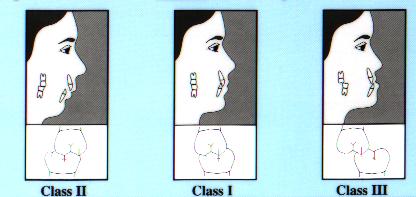|
|
|
It is
essential that all children be examined for orthodontic
deformities by about the age of 7 when the most common
skeletal deformities can most easily be treated. Many of
these problems are not apparent to the parents, and
require a dental exam to identify them. And here lies the
real art of orthodontics. If need be, orthodontics can be
started as early as 8-9 years. Left untreated, these
deformities cause the child lots of functional and esthetic
problems in the years ahead.
Children are special because they are growing. Their bone is
relatively soft and fairly pliable; hence it is easy to
guide the bone growth. The optimum age for beginning
treatment depends upon the specific deformity that the
dentist needs to correct, but the best age for evaluation
of that specific deformity is usually age 7.Girls
need to examined earlier as compared to boys.
A major growth spurt takes place at puberty. This is another
crucial time . When deformities are assessed early and
treated prior to the time that they have fully developed, we
have "intercepted" the problem and this is referred to as interceptive
orthodontics.
The congenital skeletal deformities

Congenital skeletal deformities are conditions occurring
at birth and are usually caused by genetic factors.
Basically these signify the bone structure which has a
heredity pattern. This gives the profile to the child which
could be anyone of the three:
Class I
This type of profile is called a Class I occlusion
(occlusion means the way the top and bottom teeth fit each
other) and it is characterized by the relative positions of
the upper and lower first molars. The class I occlusion
yields the best facial profile.
Class II
This is probably the most common skeletal deformity
(deviation from "normal"). This occlusion yields a "weak"
chin, or retruded chin profile.
Class III
Class III deformities yield a "prognathic",
or "strong chin" appearance. This could be caused by over
development of the lower jaw, or by underdevelopment of the
upper jaw .
|
|